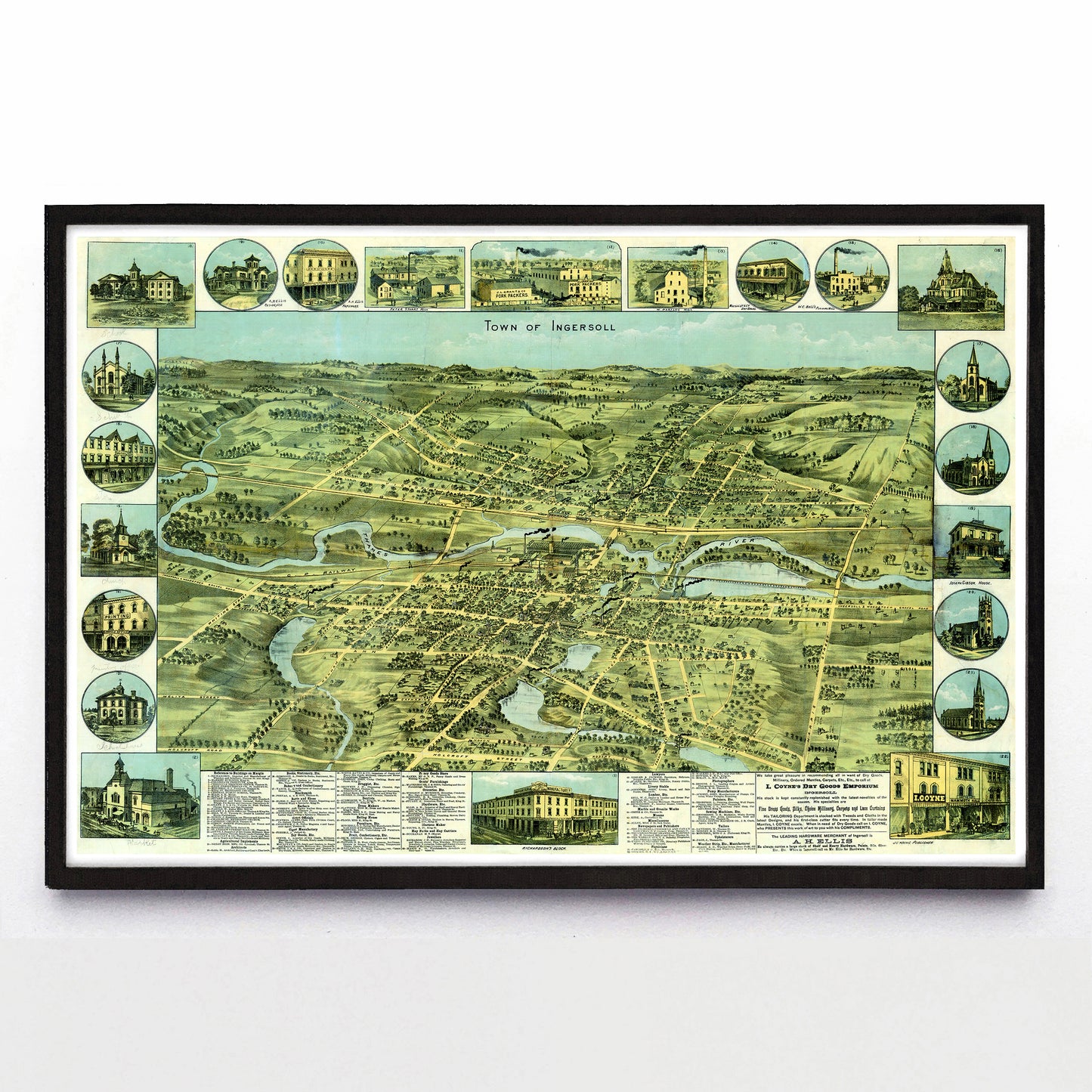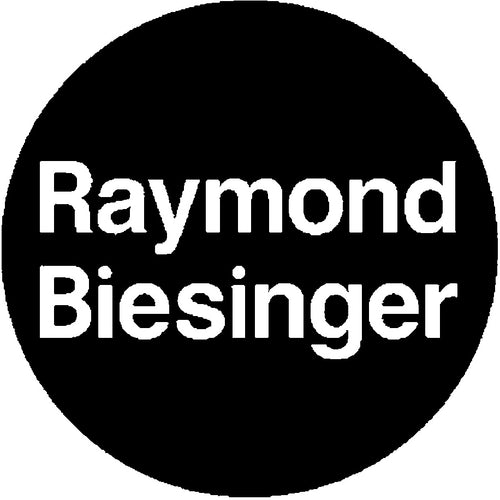“Town of Ingersoll” print by William Nathaniel Wesbroom (1885)
“Town of Ingersoll” print by William Nathaniel Wesbroom (1885)
Couldn't load pickup availability
William Nathaniel Wesbroom’s 1885 print of Ingersoll shows the small southwest Ontario town of 4000 as green gem on the Thames, more garden than city despite being crossed by the Grand Trunk Railway. His building vignettes are crisp and arranged in geometric frames encircling the main image. Clouds gently billow and surround the floating “Town of Ingersoll” text, and streets blend into the greenery rather than interrupt it. But besides being a beautiful northwestward view of Ingersoll, the map gives clues about the economics of making bird’s eye views like this.
As the genre developed, businesses, institutions, and the artists themselves realized the advertising potential in the maps. For example, Richardson Co. was an importer and seller of watches and jewelry at the corner of Thames and King Streets in Ingersoll in 1885, and they probably paid Wesbroom to be depicted in the prestigious centre-bottom vignette and listed first among the businesses in the small text at bottom.
Meanwhile, a competing Ingersoll business (Mason & Co.) had no vignette and was buried sixtieth on that same list. While we don’t have the receipts for this particular map, cash-for-favourable placement was common in the birds-eye-view business. Some artists weren’t above adding a fictional second storey or fancy signage in exchange for payment, either, and most sought to charm town leaders by omitting or de-emphasizing poorer or “undesireable” parts of town.
While images like this are useful to a historian and beautiful to look at, they should be considered more of a flattering portrait bought and paid for than a work of objective non-fiction. Also of note: in a time-saving measure as old as graphic design itself, Wesbroom reused this map’s framing system on his 1885 maps of neighbouring Woodstock and St. Thomas.
A reproduction available at 18x12" or 36x24" on Epson Enhanced Matte 192 gsm paper printed with Epson UltraChrome XD2 archival ink. Sold in an open edition, unframed. Based on this public domain image from Stanford University Library.


